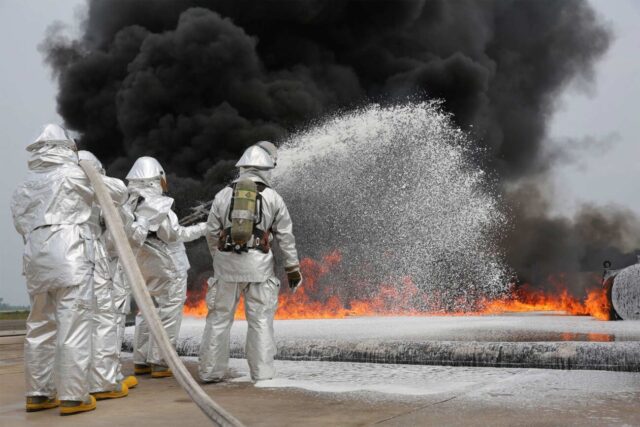
“We were happy here. Then came the news: our water is poisoned with an invisible chemical.” This isn’t a movie plot. It’s the harsh reality for thousands of people whose lives have been shattered by the discovery of per and polyfluoroalkyl substances (PFAS) in their environment.
These “forever chemicals” carry the threat of severe health problems like cancer and congenital disabilities. But there’s another, often overlooked, danger: the burden on mental health.
The relentless anxiety of fearing for your family’s safety, the stress of watching your property value plummet, and the uncertainty about the future are the real experiences of people facing PFAS contamination.
These burdens chip away at your well-being, leaving you helpless and afraid. Understanding the mental health impact of PFAS is the first step to finding support and getting your life back on track.
How PFAS Chemicals Spark Anxiety and Stress

You’ve likely heard about the frightening health risks of PFAS chemicals, such as cancer, thyroid problems, and more. But these invisible pollutants also wage war on your mental health. Studies reveal that perfluorooctane sulfonic acid (PFOS), a member of the PFAS family, disrupts dopamine and serotonin in the brain. This disruption can worsen or even trigger depression and anxiety.
The impact of PFAS contamination goes beyond physical health. In a revealing study, two doctors analyzed the mental toll experienced by residents of Maine, USA, whose water was contaminated with PFAS chemicals.
Imagine buying your dream home, only to discover the water supply is contaminated with harmful chemicals. Ashley and Troy Reny faced this nightmare. The study uncovered that the source of this water contamination was wastewater sludge used as fertilizer on local farms. This discovery is frustrating and terrifying, potentially leading to sleepless nights and relentless worry.
For many people, discovering PFAS contamination feels like a betrayal. We trust industries and leaders to prioritize our safety, and realizing they’ve knowingly put us at risk is infuriating. This shattered faith adds an overwhelming layer of stress, leaving us unsure who or what to believe.
Understanding AFFF’s Role in Fueling Contamination

The term “forever chemicals” is synonymous with PFAS, and there’s a key reason why. Aqueous Film Forming Foam (AFFF), a firefighting foam developed in the 1960s by the US Navy and 3M, was designed to extinguish liquid fuel fires rapidly. However, by the 1970s, scientists and health experts began raising serious concerns about the chemicals within AFFF, which contain PFAS at concentrations of up to 5%.
The danger lies in the unique chemical structure of PFAS. Their carbon atoms are strongly bonded to fluorine atoms, creating a bond more brutal than almost any other found in nature. Despite this known danger, AFFF was widely used on military bases, airports, and other locations for decades, where flammable liquid fires posed a threat.
When AFFF firefighting foam is used for training or emergencies, the PFAS chemicals within it seep into the ground, poisoning nearby water supplies. Military bases and airports, where AFFF was used extensively, are now ground zero for some of the worst PFAS contamination.
Discovering you’ve been exposed to a known toxin, especially one that was deliberately hidden from you, is infuriating. That’s why lawsuits are flooding in against AFFF manufacturers and others responsible. As of April 1, 2024, 7,738 AFFF lawsuits are pending consolidation, according to TorHoerman Law.
The AFFF lawsuit is holding those responsible for PFAS contamination accountable and asking for compensation for suffering. This includes medical costs, lost wages, and, importantly, the mental health damages inflicted by PFAS exposure.
If you’re concerned about AFFF, perhaps because you live or work near a military base, finding reliable information is crucial. Even if legal action isn’t right, understanding your rights empowers you during a stressful time.
When Worry Turns to Trauma

The relentless stress of PFAS exposure isn’t just unpleasant; for some, it can escalate into something much more severe. Constant vigilance for signs of illness and nightmares that disrupt your sleep — these are potential indicators of trauma.
While not everyone will experience this severe impact, specific individuals are more vulnerable. This includes those with very high PFAS exposure levels or those with pre-existing anxiety or PTSD from other life events. Regardless of the cause, these symptoms shouldn’t be dismissed as mere worry.
Sadly, the trauma of PFAS contamination reaches far beyond the individual. Entire families can be gripped by tension as concerns over health and finances mount. A study reports that the economic toll of these chemicals is around $5.5 billion to $63 billion annually.
Childhood obesity is the most significant financial burden, costing Americans about $2.7 billion, followed by hypothyroidism in women contributing to $1.26 billion.
FAQs

What Are the Effects of PFAS on Human Health?
PFAS (per- and polyfluoroalkyl substances) are a group of artificial chemicals with potentially serious health effects. These chemicals are linked to increased cholesterol levels, liver problems, reduced immune responses, developmental issues in children, and even an increased risk of certain cancers like kidney and testicular cancer.
How Do You Detox Your Body From PFAS?
Sadly, there’s no proven, rapid way to detox PFAS from your body. These chemicals break down very slowly, making removal difficult. The best approaches focus on reducing further exposure by avoiding products containing PFAS and filtering drinking water if it’s contaminated.
Who Is Most at Risk From PFAS Exposure?
Those most at risk from PFAS exposure include industrial workers who handle PFAS materials, people living near PFAS-contaminated sites, firefighters, and young children. Children are especially vulnerable due to their developing bodies, increased intake relative to body weight, and tendency to put things in their mouths.
What Foods Contain PFAS?
PFAS contamination can occur in various foods. Seafood is a significant source, as PFAS can accumulate in fish and shellfish. Produce grown in PFAS-contaminated soil or water can also contain these chemicals. Additionally, processed foods with PFAS-treated packaging, like microwave popcorn or fast-food items, may contribute to exposure.
PFAS contamination jeopardizes both physical and mental health. The fact that 98% of Americans have these chemicals in their bodies is deeply concerning. The anxiety, fear, and loss of control are genuine consequences. But this doesn’t have to define your future.
Scientists are working tirelessly to understand the total mental health impact of PFAS, which will lead to better support and care. Communities are uniting to demand action and hold polluters accountable.
The Environmental Protection Agency (EPA) recently took a significant step by designating two PFAS chemicals— perfluorooctanoic acid (PFOA) and perfluorooctanesulfonic acid (PFOS)—as hazardous substances under the CERCLA Act. This rule will boost awareness about these harmful chemicals and make it easier for polluters to clean up their toxic mess.
You also have power as an individual. Using a reliable water filter reduces your exposure. Joining local advocacy groups keeps you informed and part of the solution. No matter how small, every step proves that you won’t let PFAS control your life.







